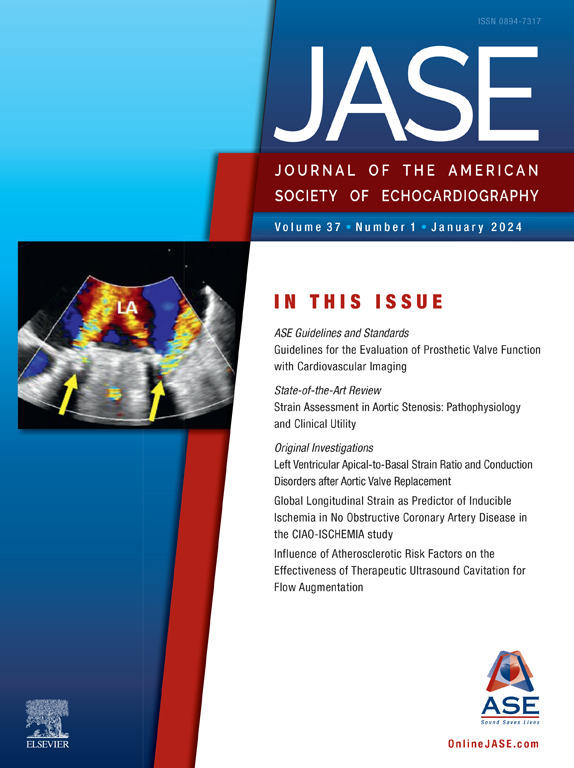Guidelines for Performing Ultrasound-Guided Vascular Cannulation: Recommendations of the American Society of Echocardiography
IF 5.4
2区 医学
Q1 CARDIAC & CARDIOVASCULAR SYSTEMS
Journal of the American Society of Echocardiography
Pub Date : 2025-02-01
DOI:10.1016/j.echo.2024.12.004
引用次数: 0
Abstract
Vascular access is a commonly performed procedure to facilitate patient care. This document provides expert consensus from diverse specialists on best practices and techniques for incorporating ultrasound (US) into vascular access procedures. This update replaces the 2011 American Society of Echocardiography guidelines for US-guided vascular cannulation. It includes recommendations for US-guided access to central and peripheral veins and arteries in adult and pediatric patients based on the strength of the scientific evidence present in the literature. The major roles of US during vascular access include (1) precannulation vessel assessment, (2) dynamic US guidance during cannulation, and (3) identification of local complications. This document discusses the general aspects of anatomic and US imaging of vessels, US-guided vascular cannulation techniques, and the identification of local vascular cannulation complications. Proper training should impart the cognitive knowledge and technical skills necessary to perform US-guided cannulation. There is an increasing body of literature indicating that US-guided vascular access improves success rates and reduces complications, although the quality of the evidence to date remains weak. A gap remains between the existing evidence and guidelines for the use of US in clinical practice. The availability of US equipment and clinical proficiency will more likely influence the role of US-guided vascular access as a standard of care than will future research studies.
求助全文
约1分钟内获得全文
求助全文
来源期刊
CiteScore
9.50
自引率
12.30%
发文量
257
审稿时长
66 days
期刊介绍:
The Journal of the American Society of Echocardiography(JASE) brings physicians and sonographers peer-reviewed original investigations and state-of-the-art review articles that cover conventional clinical applications of cardiovascular ultrasound, as well as newer techniques with emerging clinical applications. These include three-dimensional echocardiography, strain and strain rate methods for evaluating cardiac mechanics and interventional applications.

 求助内容:
求助内容: 应助结果提醒方式:
应助结果提醒方式:


